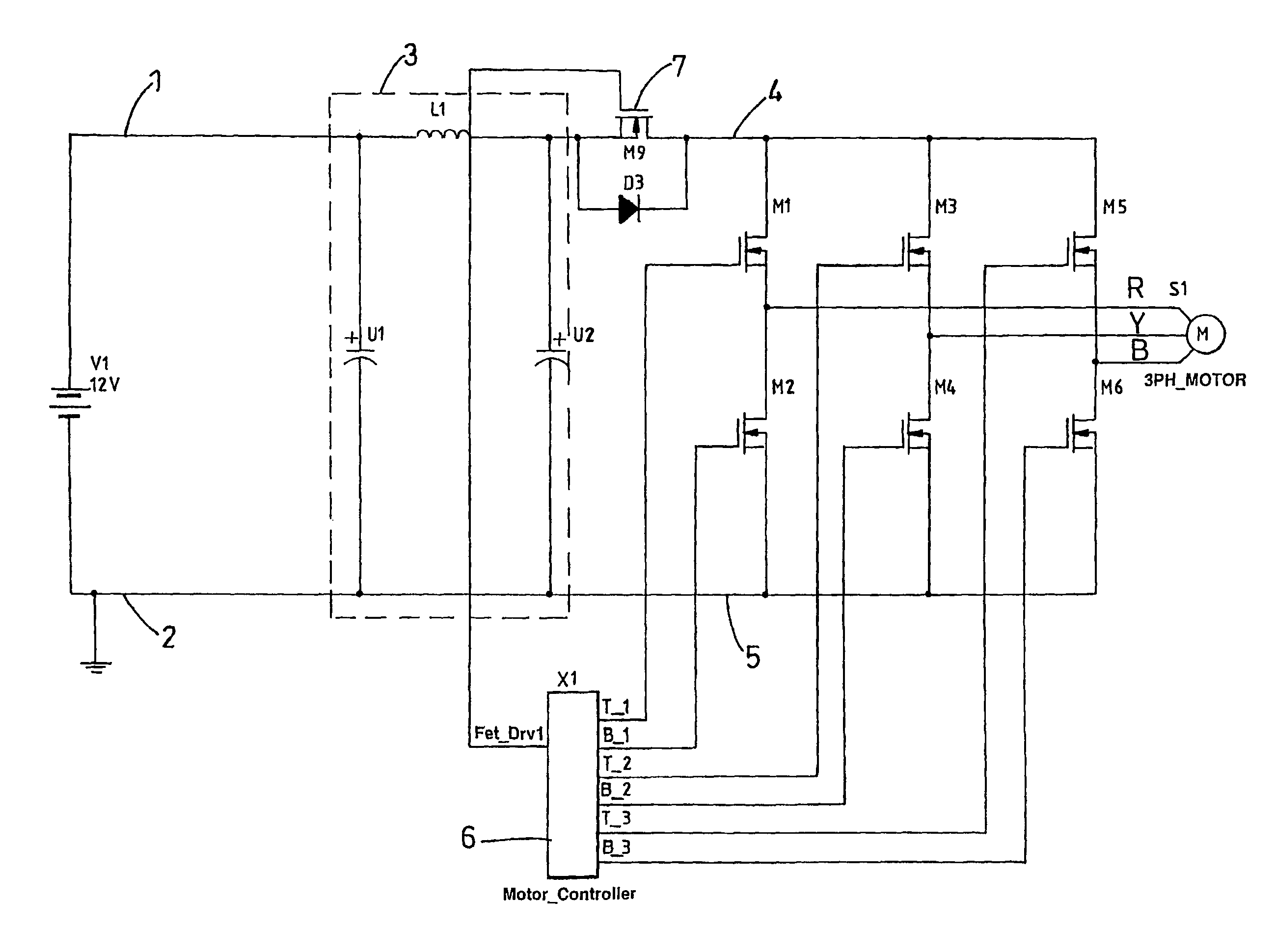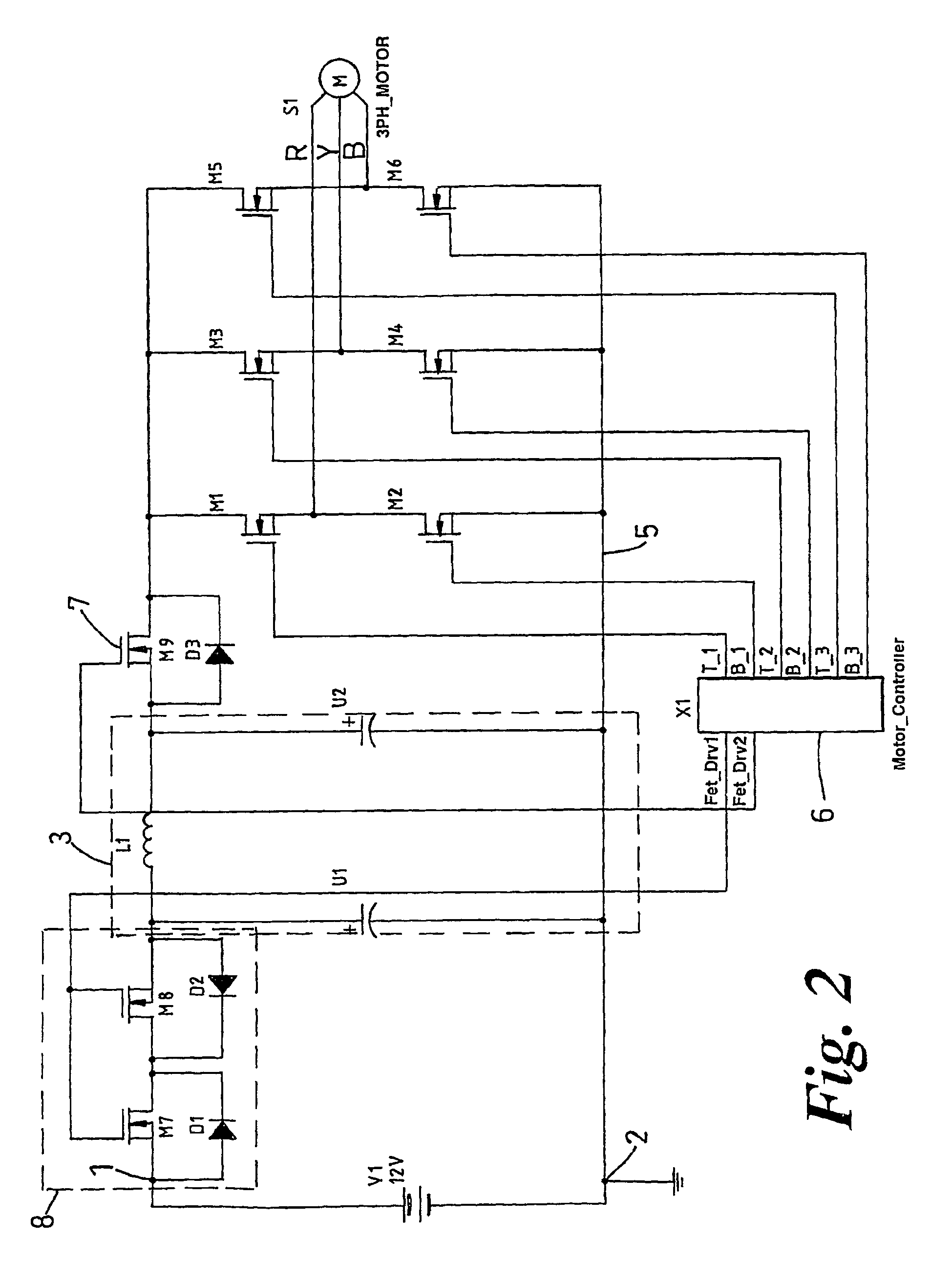Motor drive circuit
a technology for motors and drives, applied in safety/protection circuits, emergency protection arrangements for automatic disconnection, dc source parallel operation, etc., can solve the problems of high cost, high cost, time-consuming, etc., and achieve the effect of low failure probability
- Summary
- Abstract
- Description
- Claims
- Application Information
AI Technical Summary
Benefits of technology
Problems solved by technology
Method used
Image
Examples
Embodiment Construction
[0035]FIG. 1 illustrates a part of an electrical power-assisted steering (EPAS) system for use in a vehicle which incorporates an electric motor. The drive circuit comprises a pair of input terminals 1,2 for connection to the positive and negative supply rails of the vehicle. A DC link filter 3 is connected between the two terminals 1,2. It comprises two capacitors U1 and U2 connected in parallel between the two input terminals, with an inductor connected in series with one of the capacitors U2. An output of the DC link filter 3, taken from between the inductor L1 and capacitor U2 is fed to a rail 4 which carries current to several motor drive sub-circuits. The sub-circuits are connected as a three phase bridge, with each phase of the bridge comprising a motor drive sub-circuit having a transistor M1-M6 connected to one of the rail 4 or to ground 5. A top transistor M1 is connected between the first end of a respective phase winding (R, Y, B) and the positive supply rail 4, and a bo...
PUM
 Login to View More
Login to View More Abstract
Description
Claims
Application Information
 Login to View More
Login to View More - R&D
- Intellectual Property
- Life Sciences
- Materials
- Tech Scout
- Unparalleled Data Quality
- Higher Quality Content
- 60% Fewer Hallucinations
Browse by: Latest US Patents, China's latest patents, Technical Efficacy Thesaurus, Application Domain, Technology Topic, Popular Technical Reports.
© 2025 PatSnap. All rights reserved.Legal|Privacy policy|Modern Slavery Act Transparency Statement|Sitemap|About US| Contact US: help@patsnap.com



